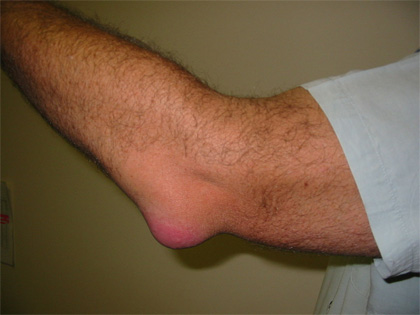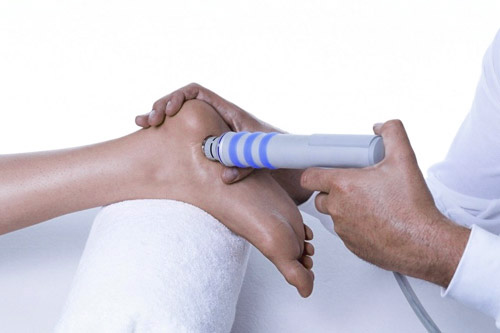|
Bursitis is the inflammation or irritation of the bursa. The bursa is a sac filled with lubricating fluid, located between tissues such as bone, muscle, tendons, and skin, that decreases rubbing, friction, and irritation.

What Causes Bursitis?
Bursitis is most often caused by repetitive, minor impact on the area, or from a sudden, more serious injury. Age also plays a role. As tendons age they are able to tolerate stress less, are less elastic, and are easier to tear.
Overuse or injury to the joint at work or play can also increase a person's risk of bursitis. Examples of high-risk activities include gardening, raking, carpentry, shoveling, painting, scrubbing, tennis, golf, skiing, throwing, and pitching. Incorrect posture at work or home and poor stretching or conditioning before exercise can also lead to bursitis.
An abnormal or poorly placed bone or joint (such as length differences in your legs or arthritis in a joint) can put added stress on a bursa sac, causing bursitis. Stress or inflammation from other conditions, such as rheumatoid arthritis, gout, psoriatic arthritis, thyroid disorders, or unusual medication reactions may also increase a person's risk. In addition, an infection can occasionally lead to inflammation of a bursa.
What Are the Symptoms of Bursitis?

The most common symptom of bursitis is pain. The pain may build up gradually or be sudden and severe, especially if calcium deposits are present. Severe loss of motion in the shoulder -- called "adhesive capsulitis" or frozen shoulder -- can also result from the immobility and pain associated with shoulder bursitis. |